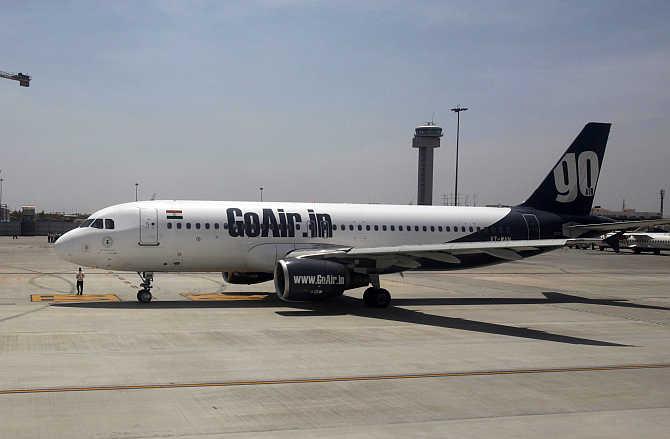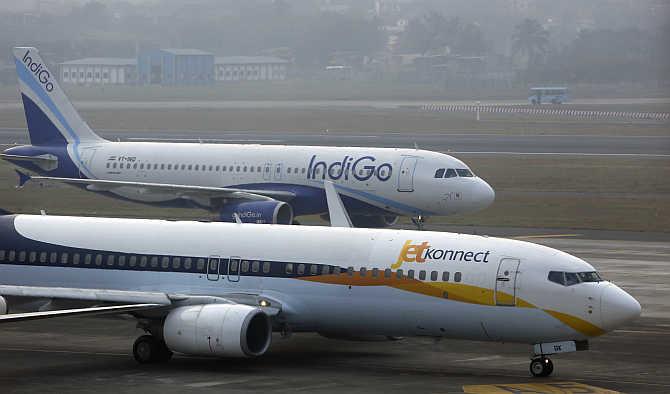 | « Back to article | Print this article |
Airlines look for ways to heal fuel burn
The seats of GoAir’s new aircraft will be lighter. All the planes it received in 2013 have wing-tip devices called sharklets, which reduce fuel burn and control gas emission. Moreover, the airline plans to retrofit some of its older A320 planes with sharklets. Similarly, SpiceJet has cut the number of ovens in some planes and carries less water in the tanks.
These are among the slew of measures taken by domestic airlines to cut fuel bills. Fuel accounts for around 40 per cent of costs for domestic airlines and aviation turbine fuel prices are around eight per cent higher than the previous year.
Click NEXT to read more...
Airlines look for ways to heal fuel burn
This, along with the rupee falling against the dollar, has hit the bottom lines of domestic carriers. “We will have different kind of seats on board the new planes, which we will induct next year. The seats will be lighter and will help in fuel bill reduction,” said GoAir chief executive Giorgio De Roni.
GoAir has 17 Airbus A320 planes, having 180 seats each, and will induct three more by July. De Roni did not share details such as seat specifications but said it would result in saving “many hundred thousand dollars”. “We have exceeded the Airbus forecast in fuel saving. We have also agreed to retrofit part of the existing fleet that do not have sharklets but this will not happen soon. The retrofitting kit will be available in 2015,” he added.
Click NEXT to read more...
Airlines look for ways to heal fuel burn
SpiceJet is also taking a number of steps to cut fuel expense. “The lighter the aircraft, the lower the fuel burn. This means, reducing the aircraft weight at the time of departure by carrying the correct quantity of fuel and flying the aircraft at the optimal flight level,” said an airline executive.
Among other things, the airline management has instructed its staff to carry less water in tanks in aircraft toilet on domestic flights. “The tanks have a capacity of 170kg but we realised half of the water was unused. Also, the number of magazines carried on board is reduced,” the executive added.
Click NEXT to read more...
Airlines look for ways to heal fuel burn
Other measures include reducing the number of ovens on some of its planes from four to two and removing airstair (in-built ladder) from the aircraft. The airstair has been removed as it is hardly used and the all airports have a step ladder for passengers to disembark from the aircraft.
SpiceJet and IndiGo did not respond to an email query on the subject. In 2011, IndiGo had advised its pilots to save 100 kg of ATF on each trip by following fuel-efficient flying procedures. The airline asked its pilots to taxi the aircraft to the bay on landing on one engine. Usually, it takes five-10 minutes to reach the boarding gate and keeping an engine off reduces fuel burn.
Click NEXT to read more...
Airlines look for ways to heal fuel burn
It also told them to use the thrust reverser on idle mode to decelerate the aircraft after landing. Jet Airways’ fuel bill increased 7.7 per cent year-on-year in the second quarter of FY14. Standalone loss increased to Rs 891 crore (Rs 8.91 billion) from Rs 99 crore (Rs 990 million) in the period. SpiceJet’s fuel bill rose 11 per cent y-o-y in the quarter. Loss shot up to Rs 559 crore (Rs 5.59 billion) from Rs 163 crore (Rs 1.63 billion) during the period.





